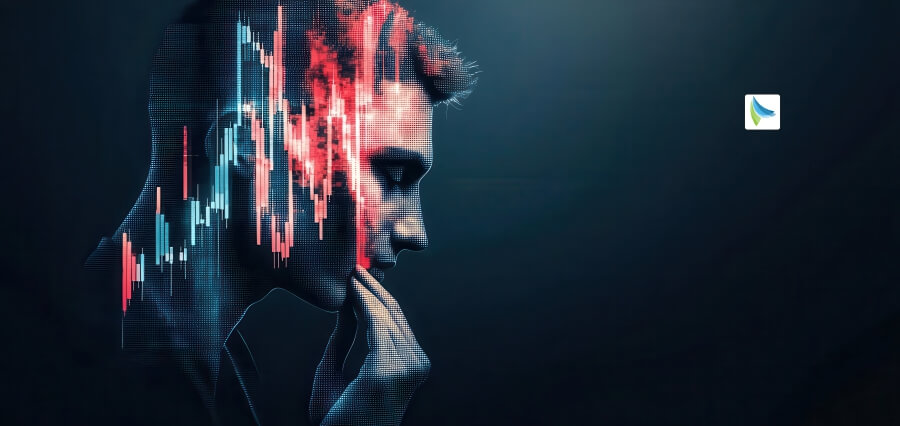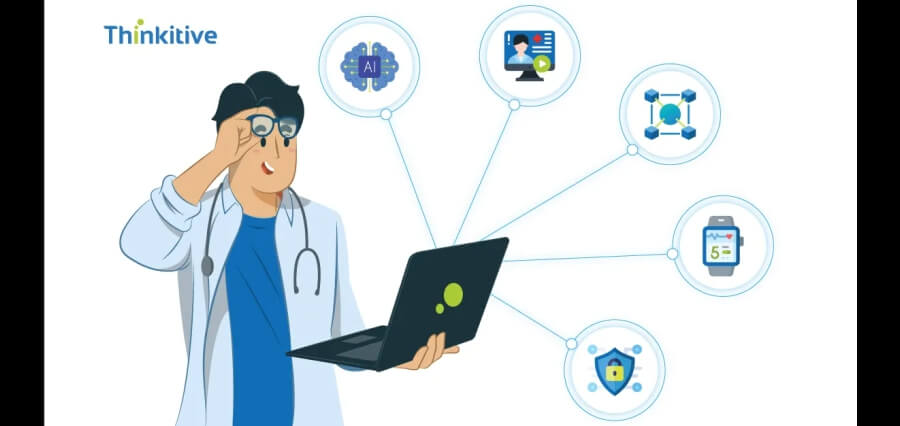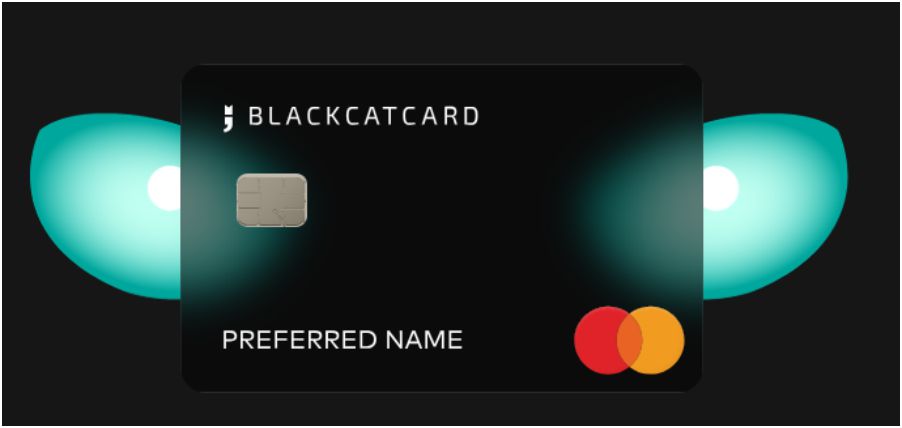The healthcare industry is constantly evolving, with the trends constantly dictating the pace of healthcare being more sophisticated and streamlined. The entire healthcare delivery landscape has changed with the introduction of technology and, specifically, healthcare software in administration, management, and healthcare delivery. It has not only made healthcare more accessible but also made diagnosis more accurate and much faster for care delivery.
Healthcare software development trends that enter and stay in the market are often the result of the need of the healthcare industry and problem of the healthcare providers. However, some of the trends are also the result of advancements in technology, such as remote patient monitoring, or leveraging AI for early disease detection.
AI in healthcare is here to stay like it is there to stay in most of the industries across the globe. However, while the healthcare industry is moving at a high pace towards sophistication directed by healthcare software development trends, you should be knowing them before making an informed decision.
So, to simplify it for you and help you in choosing which trend would be most suitable for your practice, here are the top 5 healthcare software development trends in 2024 that you should keep an eye on.
Having said that, without further ado, let’s get started!
1. The Rise of Artificial Intelligence, aka AI in Healthcare
In healthcare, before drawing a conclusion about a person’s health and deciding on a care plan, there are many things that lead to it. For instance, medical imaging analysis, disease prediction, medication, etc. This is where AI in healthcare comes into the picture. While some areas have been significantly improved with the introduction of AI, such as analysis, the area that has mostly benefited from AI is indeed drug discovery.
AI has enhanced the entire process and fastened it with accuracy and precision. Apart from that, leveraging AI for early disease detection is one of the most impactful and popular healthcare software development trends in 2024.
Taking it a step further, AI-powered chatbots have been introduced in healthcare software, and they have been effectively used to provide basic or generic healthcare services to patients. With AI-powered chatbots, patient education has been enhanced, and somewhere, it has also made healthcare access sophisticated for patients. The best example of this can be seen in appointment scheduling, reminders, and filling the gaps of care left behind due to the high pressure on healthcare providers.
2. The Continued Growth of Telehealth Solutions
Another healthcare software development trend that is gaining traction is the adoption rate of telehealth solutions. In some of the states of the United States, the adoption rates have exceeded 90%, which is closing the gaps in care effectively and making care available for patients in underserved and rural areas. Telehealth solutions combined with remote patient monitoring have made it convenient to access care without the need to spend much time and money accessing it.
On the other hand, with 90% patient satisfaction rate, telehealth has become the go to mode of receiving care for chronic disease management. To support this, CMS programs like chronic care management and remote patient monitoring are contributing heavily to making telehealth a mainstream aspect of healthcare delivery.
Advancements in healthcare technology have also introduced AR/VR in healthcare. This has opened a new window of opportunities in healthcare delivery. Today, along with telehealth, AR/VR in healthcare is being used to provide immersive therapy and give patients an elevated experience.
This would give you a brief idea of how telehealth solutions are one of the top priorities for healthcare providers. Furthermore, telehealth solutions are potentially going to be one of the most popular healthcare software development trends, given the burden on healthcare providers and the introduction of smart devices in healthcare for remote patient monitoring which will probably enhance the entire healthcare delivery.
3. The Focus on Interoperability and Data Sharing
Healthcare software development will become a norm in 2024 and will continue to do so as healthcare moves towards a completely digital ecosystem and infrastructure. Decoding one of the most popular healthcare software development trends during this transition stage in interoperability and data sharing. Before getting into the details, let’s first understand what exactly interoperability is and why it is so important for the healthcare industry moving forward.
Well, interoperability can be simply defined as the ability of the computer system to exchange information with other systems and make sense of it. Since the healthcare industry is interdependent on various healthcare service providers, the systems must seamlessly exchange information for appropriate care delivery.
Now, as healthcare providers are adopting various healthcare systems, interoperability for accurate data sharing will be crucial, especially for providers dealing with electronic health records (EHR). Though some of the healthcare systems have adopted the HL7 standard for data exchange, it is a walk in the park for healthcare systems to achieve interoperability.
Apart from that, there is a high chance of data loss or theft during the transition process. To avoid this, it is important for healthcare systems to achieve interoperability, and given the need for seamless delivery, it is one of the most popular healthcare software development trends in 2024.
Along with that, the rise of blockchain technology has also sparked a new trend for interoperability and cybersecurity in healthcare. Blockchain technology will not only provide a secure system of seamless data sharing but also bring transparency in the system which will be essential for sophistication of the healthcare industry.
One of the most distinct ways to capitalize on these healthcare software development trends is to use open-source EHR systems. This will enable widespread adoption of EHR systems, which will help you in creating a secure and well-connected ecosystem of healthcare systems. Adding a cherry on top will also help in customization and make data sharing much easier and streamlined.
4. The Patient Empowered by Wearables and Mobile Health Apps (mHealth)
With smartwatches, the relevance of smart devices in healthcare has become more prominent. They have not only helped in remote patient monitoring but also empowered us to keep their health always in check. These wearable devices are used to monitor vital signs, record sleep patterns, and perform certain health activities for patients. However, smart devices are independent devices that cannot automatically transfer data from themselves to the patient’s or provider’s system.
To enable this, an mHealth app or mobile health application is required. These smart devices in healthcare, connected to the user’s mobile phone with the help of a mHealth app, would not only provide the patient with an interface to view their health reading but also allow the collected data to be easily transmitted to the provider’s system almost instantly for real-time continuous monitoring.
These mHealth apps are also used to increase medication adherence and remind patients of their appointments. Taking it a step further, some healthcare organizations have also enabled personalized medication and provided services that help patients manage their health better, promoting self-care.
Being one of the biggest healthcare software development trends in 2024, it is also breaking its traditional barriers and introducing new ways of care and self-care management. One of the examples of this is gamification in mHealth apps to keep patients engaged in their healthcare journey. So, if you’re betting on a profitable healthcare trend, then AI in healthcare with mHealth App is the way to go.
5. The Growing Importance of Cybersecurity in Healthcare
Last but not least, cybersecurity in healthcare is one of the healthcare software development trends that lies in the shadows. The data healthcare applications deal with is crucial, personal and can reveal many aspects of a person’s lifestyle and choice. That is the reason the healthcare industry is prone to cyber-attacks, and the risk is increasing with the wide adoption of healthcare systems.
However, finding opportunity in this cybersecurity in healthcare is gaining traction of many healthcare providers across the globe. Today, ransomware threats in healthcare IT are common but implementing robust cybersecurity measures to protect patient data has become crucially important.
Some of the ways to ensure cybersecurity in healthcare for safeguarding and maintaining the privacy of healthcare data are given below:
- Implementing strong access controls
- Strong data encryption
- Regular updates to address security vulnerabilities
- Regular penetration testing to identify and address loopholes in the network defenses
- Effective and hands-on employee training
Conclusion
In a nutshell, these five healthcare software development trends mentioned above are either driven by industry needs or technological advancements. However, as the healthcare industry slowly moves towards a completely digital ecosystem, these five trends can define the industry’s progression into the future.
All these healthcare software development trends have the potential to revolutionize healthcare for both patients and providers. While AI in healthcare is already leading the race with personalized medicine, drug discovery, and streamlining care delivery, other trends are emphasizing many aspects of healthcare delivery.
So, if your practice is stuck in this digital transition of the healthcare industry, choose the best healthcare software development trends that suit your practice and get started with the transition. If you’re confused about where to start, here is your free consultation call to help you decide the roadmap for the future of your healthcare practice.
Frequently Asked Questions
- What is the role of AI in healthcare software development?
AI in healthcare is transforming healthcare software development by:
- Analyzing vast datasets to improve drug discovery, medical imaging analysis, and personalized medicine.
- Powering chatbots and virtual assistants for patient support and basic medical advice.
- Streamlining tasks and improving efficiency for healthcare providers.
- How does telemedicine benefit patients and healthcare providers?
Here is how telemedicine can benefit both patients and providers:
- Patients: Offers convenient access to care, reduces travel time, and improves appointment flexibility.
- Providers: Enhances efficiency, expands reach to remote patients, and improves patient satisfaction.
- Why is blockchain important for healthcare data security?
Blockchain can significantly improve healthcare data security by creating an immutable and tamper-proof ledger for medical records. This means any changes to a patient’s data can be tracked and verified, making it much harder for hackers to access or alter sensitive information.
- What is the Internet of Medical Things (IoMT)?
The Internet of Medical Things (IoMT) refers to a network of medical devices that collect and share patient data wirelessly. These devices can include wearables like fitness trackers, implants like pacemakers, and monitoring equipment in hospitals. IoMT allows for remote patient monitoring, improved chronic condition management, and better overall care.
- What features should a healthcare mobile app have?
A healthcare mobile app should empower patients to manage their health conveniently. Key features include:
- Scheduling appointments
- Managing prescriptions
- Securely viewing medical records
- Communicating with doctors via chat or video calls
- Tracking health data (e.g., vitals, fitness)
- Receiving appointment reminders and medication refill alerts
- How can healthcare providers ensure their software is secure?
Healthcare providers can strengthen software security by:
- Regularly updating software with security patches.
- Implementing strong access controls like multi-factor authentication.
- Encrypting patient data to safeguard sensitive information.
- What are the regulatory considerations for using AI in healthcare?
Using AI in healthcare involves regulations regarding data privacy, bias, and transparency.
- HIPAA compliance: Ensure AI tools comply with HIPAA regulations to safeguard patient data privacy.
- Algorithmic bias: Be mindful of potential biases in AI algorithms to ensure fair and equitable care.
- Transparency: Maintain transparency in AI decision-making processes to build trust with patients and providers.
- How can I get started with implementing telehealth solutions?
Here is the easy 4-step guide for implementing telehealth solutions and get started:
- Assess your needs: Identify how telehealth can benefit your practice.
- Research technology: Find HIPAA-compliant platforms that integrate with your workflow.
- Review regulations: Ensure you meet telehealth regulations for your area.
- Train staff & patients: Prepare your team and patients for virtual visits.














